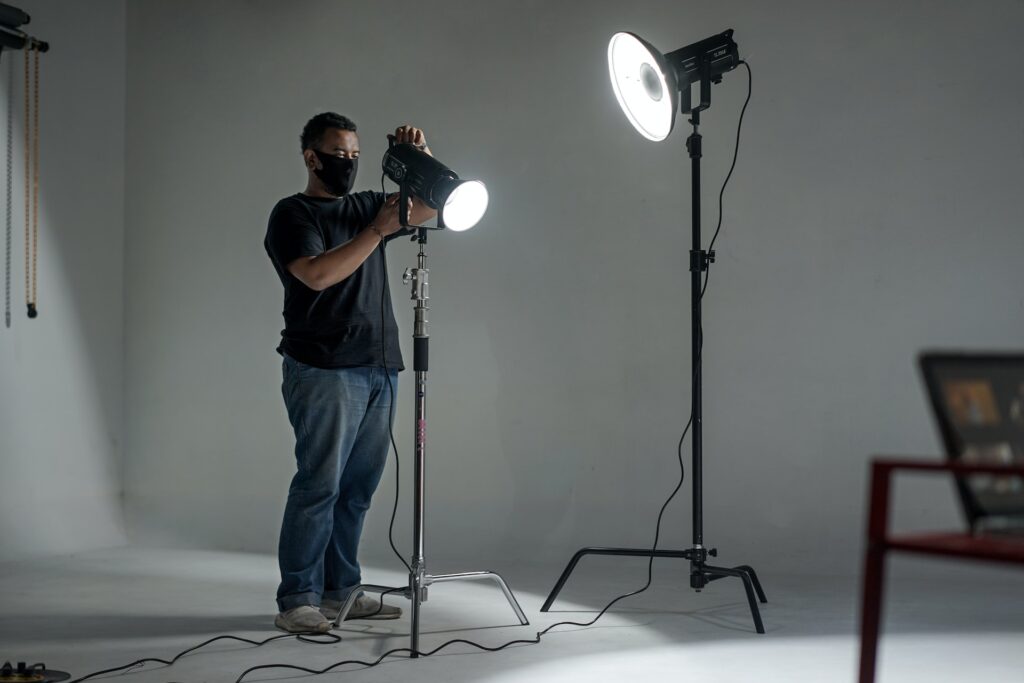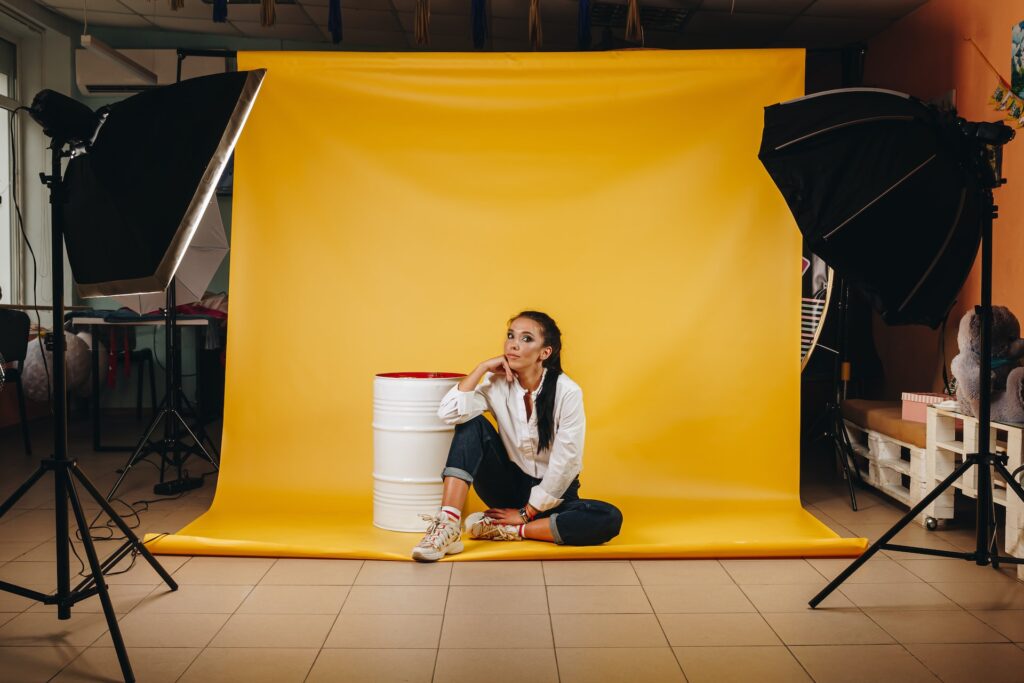The essentials of lighting for videomaking
Lighting is a crucial element of videomaking, as it helps to set the mood and tone of a scene, and can also highlight the important features of a subject.

Here are the essentials of lighting for videomaking:
Key light
The key light is the main light source in a scene and is typically placed on one side of the subject. It is used to illuminate the subject and create shadows, which can help to define the shape and contours of the subject.
Fill light
The fill light is a secondary light source that is used to fill in shadows created by the key light. It is typically placed on the opposite side of the key light, and is used to soften the shadows and create a more even lighting on the subject.
Back light
The backlight is a light source placed behind the subject and is used to separate the subject from the background. It creates a rim of light around the subject, which can help to highlight the subject and create a three-dimensional look.
Ambient light
Ambient light is the natural light present in a scene and can come from windows, overhead lighting, or even the sun. It is important to consider the ambient light when setting up your lighting, as it can affect the overall look of the scene.
Color temperature
The color temperature of a light source refers to the hue of the light and is measured in degrees Kelvin. Warm light has a lower color temperature (e.g. candlelight, incandescent bulbs), while cool light has a higher color temperature (e.g. daylight, fluorescent bulbs). Mixing light sources with different color temperatures can create an unbalanced look, so it’s important to match the color temperature of your lights to create a cohesive look.
Light intensity
The intensity of a light source refers to how bright or dim it is, and can be adjusted using dimmer switches or by moving the light closer or farther away from the subject. It’s important to pay attention to the intensity of your lights, as too much light can wash out the subject, while too little light can make the subject appear too dark.
Lighting ratios
The lighting ratio is the ratio of the intensity of the key light to the fill light. A high lighting ratio (e.g. 4:1) will create more contrast and drama, while a low lighting ratio (e.g. 1:1) will create a more even, flat look. Experimenting with different lighting ratios can help you achieve the desired mood and tone in your scene.
By understanding and using these essential lighting techniques, you can create professional-looking videos that effectively communicate your message.
In conclusion, lighting is a crucial element of videomaking that can greatly impact the mood and tone of a scene. By understanding and utilizing the key light, fill light, backlight, ambient light, color temperature, light intensity, and lighting ratios, you can effectively create professional-looking videos that effectively communicate your message.
If you’re looking to improve your lighting skills, there are many resources available, including online tutorials and workshops. Don’t be afraid to experiment with different lighting setups and techniques to see what works best for your specific project.
And remember, the most important thing is to have fun and be creative!
Happy filming!
Latest Articles:
-
When Rome Whispers: A Sunset Journey Through Time
-
Rome’s Best-Kept Secrets: Hidden Gems Only Locals Know About
-
Rome: The Eternal City - Complete Guide
-
Rome in 3 Days: The Ultimate Itinerary for you!
-
Naruto: Review of the first Manga
-
Top 7 Free AI Certifications You Can Start Today
-
Guide to Snow (Winter) Photography
-
A Brief Guide to Financial Freedom
-
How to Become a Content Creator on TikTok
-
Embracing Vulnerability: Who is Brené Brown
